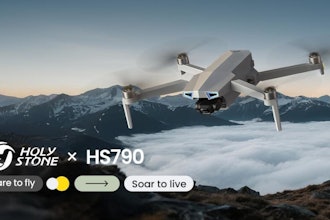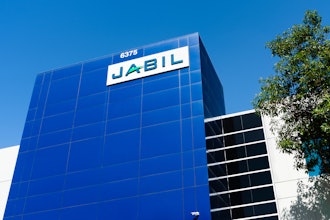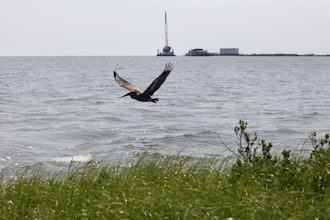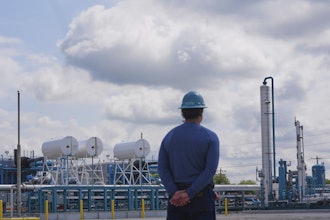Blue Origin Debuts Space Capsule
Last week, Jeff Bezos, the engineer of Amazon.com fortune and fame, offered a sneak peek at a new development in his $500 million side project. He released new images of the progress that aerospace manufacturer Blue Origin has made in developing the New Shepard capsule. Soon, the capsules will be sending well-paying space tourists on 11-minute suborbital flights.
According to Bezos, while the New Shepard flight test program has been focused on system performance, the Blue Origin team has also been designing the capsule interior "with an eye toward precision engineering, safety, and comfort" — and it looks like they nailed it.
The capsule will hold six people who will be able to get out of their seats and experience weightlessness as they gaze out of what the company is calling the largest windows ever in space.
What I found fascinating was the center console, and how it resembles Echo, Amazon's voice controlled speaker. Who knows, maybe Alexa will be your guide on these 11-minute trips to the doorstep of space.
The capsules were on display at the 33rd Space Symposium in Colorado Springs this week, and the crowd seemed impressed, even Buzz Aldrin. Blue Origin still plans to have human test flights by the end of 2017, with customer flights beginning in 2018.
DARPA's Sub-Scale UAV
DARPA recently flight-tested a sub-scale version of a novel aircraft design as part of its vertical takeoff and landing (VTOL) X-Plane program, and it looks like a better solution than that U-Lion we saw last week, or perhaps just a little further along.
Made by Aurora Flight Sciences, the aircraft has 24 electric ducted fans—18 within the main wings and six in the front wing (canard), that allow the plane to take off and land vertically. After the successful tests, they’ll now begin work on the full-scale version.
The full-scale VTOL X-Plane, officially called the XV-24A, will weigh 12,000 pounds – nearly four times the size of the craft in the recent test. The full-scale craft will also have to hit specific performance targets. So, we can look forward to the next version that should be able to exceed 300 knots, which is about 345 mph.
Boeing’s New Horizon
Yesterday, Boeing announced HorizonX, a new innovation cell that the company hopes to use as a vehicle to find and accelerate emerging technologies, particularly transformative aerospace technologies, manufacturing innovations and emerging business models. The announcement came with news of the venture's first two investments, which will help gauge what is catching the company’s eye.
The first is Washington, D.C.-based Upskill, which makes enterprise software for augmented reality (AR) wearables. We have previously discussed the potential impact AR with have on the industry, and Upskill is focused on using it to enhance productivity, quality and safety in manufacturing, field service and logistics.
The second investment is Zunum Aero, a Kirkland, Wash.-based company that trying to develop alternative propulsion aircraft. The startup is trying to build hybrid electric airplanes that, according to GeekWire, could reduce fares by up to 80% for ~1,000 mile trips.
Boeing has been working with Upskill for more than two years to see if it could find a use for the company’s technology. But if Zunum sounds more like your style, the company is looking for help, particularly anyone with expertise in aircraft design, aeroacoustics, propulsors, electric drives, power conversion, battery packs, optimization and control.
This is Engineering By Design with David Mantey.






















